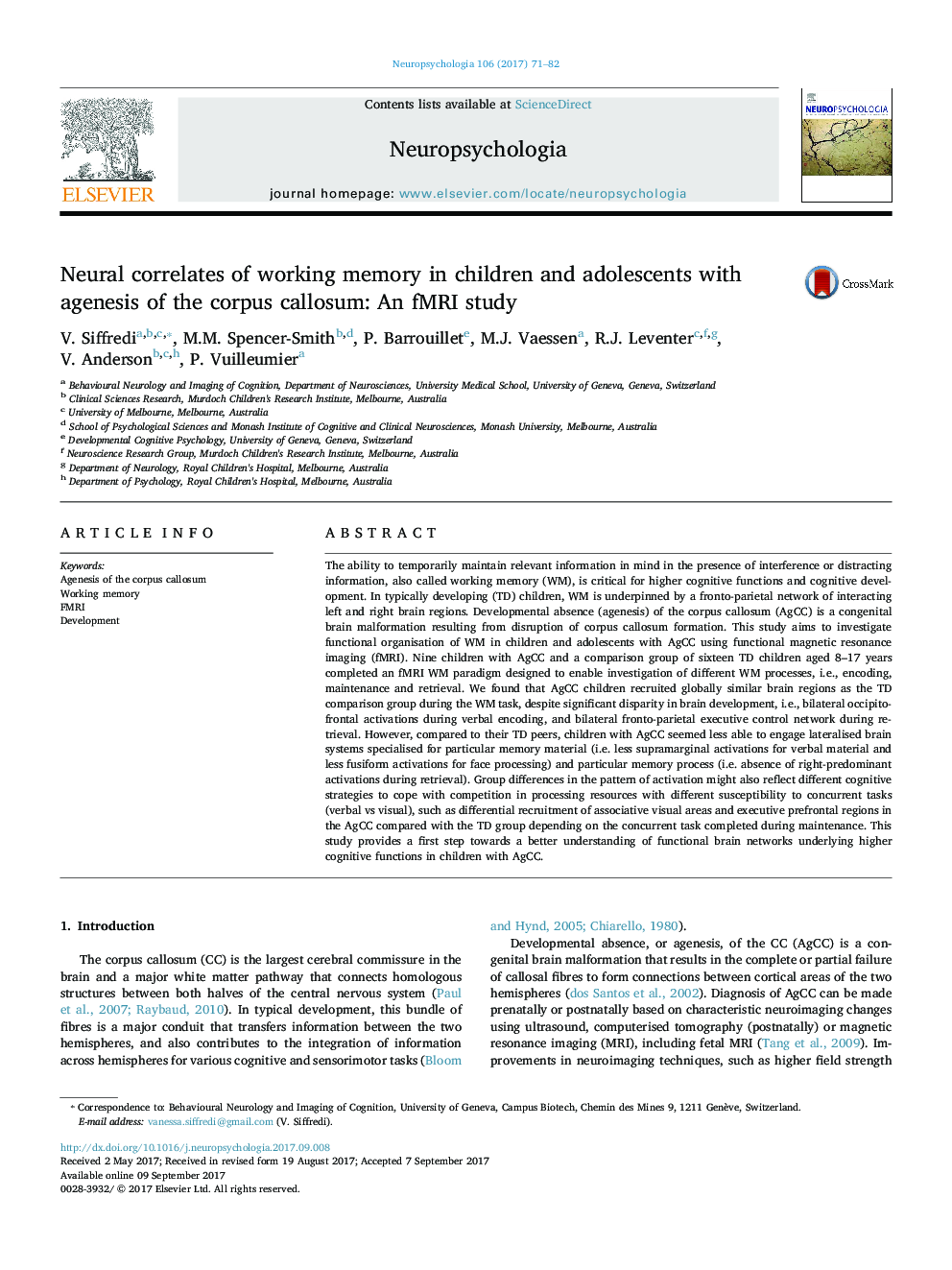| کد مقاله | کد نشریه | سال انتشار | مقاله انگلیسی | نسخه تمام متن |
|---|---|---|---|---|
| 5045032 | 1475549 | 2017 | 12 صفحه PDF | دانلود رایگان |

- First study of brain related-activation during working memory in callosal agenesis.
- Globally similar network in AgCC as the comparison group.
- Group differences in activation may reflect different cognitive strategies.
- Group differences linked to different hemispheric lateralisation.
- Alternative neural pathways might compensate for callosal agenesis.
The ability to temporarily maintain relevant information in mind in the presence of interference or distracting information, also called working memory (WM), is critical for higher cognitive functions and cognitive development. In typically developing (TD) children, WM is underpinned by a fronto-parietal network of interacting left and right brain regions. Developmental absence (agenesis) of the corpus callosum (AgCC) is a congenital brain malformation resulting from disruption of corpus callosum formation. This study aims to investigate functional organisation of WM in children and adolescents with AgCC using functional magnetic resonance imaging (fMRI). Nine children with AgCC and a comparison group of sixteen TD children aged 8-17 years completed an fMRI WM paradigm designed to enable investigation of different WM processes, i.e., encoding, maintenance and retrieval. We found that AgCC children recruited globally similar brain regions as the TD comparison group during the WM task, despite significant disparity in brain development, i.e., bilateral occipito-frontal activations during verbal encoding, and bilateral fronto-parietal executive control network during retrieval. However, compared to their TD peers, children with AgCC seemed less able to engage lateralised brain systems specialised for particular memory material (i.e. less supramarginal activations for verbal material and less fusiform activations for face processing) and particular memory process (i.e. absence of right-predominant activations during retrieval). Group differences in the pattern of activation might also reflect different cognitive strategies to cope with competition in processing resources with different susceptibility to concurrent tasks (verbal vs visual), such as differential recruitment of associative visual areas and executive prefrontal regions in the AgCC compared with the TD group depending on the concurrent task completed during maintenance. This study provides a first step towards a better understanding of functional brain networks underlying higher cognitive functions in children with AgCC.
Journal: Neuropsychologia - Volume 106, November 2017, Pages 71-82